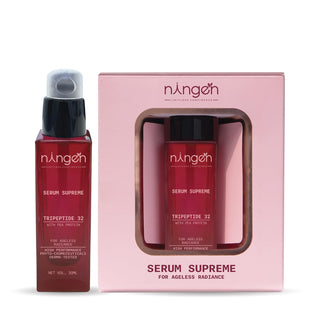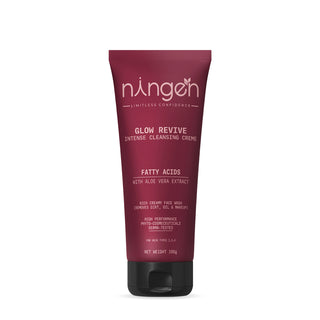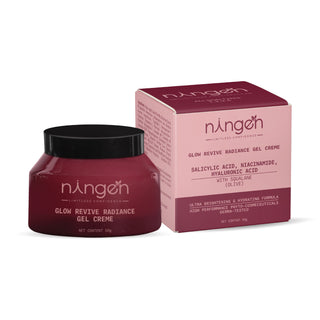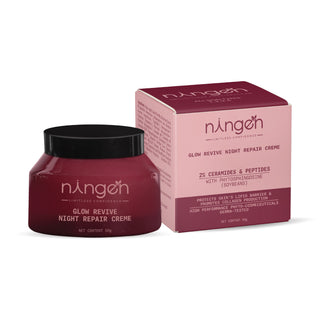TLDR;
Most vitamin C serums fail because they oxidize within weeks, turning brown and losing their potency, sometimes even causing skin discoloration & irritation. The game-changer is understanding that stable vitamin C forms can deliver all the vitamin C benefits without the oxidation drama. Learning how to choose a vitamin C serum properly and mastering techniques to prevent oxidized serum are crucial for getting real results. Stable vitamin C formulations represent the future of effective skincare. Still, they must be applied in the morning with SPF and used consistently for 6-8 weeks to see transformative anti-aging and collagen-boosting benefits.
Have you ever opened your expensive vitamin C serum only to find it's turned an unsettling brown color? You're not alone. This frustrating experience has left countless skincare enthusiasts wondering about the benefits of vitamin C and whether they're worth the investment, or just another marketing scheme.
Here's the plot twist: Vitamin C isn't the problem. Unstable vitamin C is. The key is learning how to choose a vitamin C serum that delivers stable vitamin C to your skin. In this article, we’ll learn about why skin needs stable vitamin C & how to get it. Let’s get started!
In this Guide;
Why Everyone Talks About Vitamin C?
Vitamin C Benefits vs. Stability Issues
How to Choose Vitamin C Serum?
Why Stable Vitamin C Works Better?
Common Problems When You Choose Vitamin C Serum
The Ultimate Guide to Prevent Oxidized Serum
When to Expect Vitamin C Benefits?
Why Everyone Talks About Vitamin C?
From social media trends to dermatologist recommendations, vitamin C serums are everywhere, and for good reason:
-
Fades dark spots and acne scars
-
Boosts collagen production
-
Brightens dull, tired skin
-
Shields against pollution and UV damage
But here’s the fact: Most people are doing it wrong.
Also read: What does Vitamin C do for your skin?
Vitamin C Benefits vs. Stability Issues
Vitamin C, especially in its pure form (ascorbic acid), is highly unstable and prone to oxidation when exposed to heat, light, and air. Once oxidized, the serum turns yellow or brown, becomes less effective, and may even irritate the skin.
The challenge with how to choose a vitamin C serum isn't just about finding the right brand; it's about understanding why most formulations fail to prevent oxidized serum formation.
But here's why your skin still desperately needs the proven vitamin C benefits:
The Collagen Connection: Key Vitamin C Benefits
Every day, your skin loses approximately 1% of its collagen after age 20. Stable vitamin C is the only topical ingredient that can actually stimulate new collagen production – not just prevent its breakdown. It's like having a personal construction crew working on your skin's foundation 24/7.
The Antioxidant Shield: More Vitamin C Benefits
Think of stable vitamin C as your skin's bodyguard against environmental damage. It neutralizes free radicals from pollution, UV exposure, and stress before they can create wrinkles, dark spots, and premature aging.
Also read: Benefits of Vitamin C serum.
How to Choose Vitamin C Serum? (That Brands Don't Want You to Know)
Since L-ascorbic acid is naturally found in the skin, it's bioavailable (aka it can be put to use immediately). The caveat is that it can be unstable, so it may oxidize before reaching your skin.
This creates a frustrating catch-22: the most effective form of vitamin C is also the hardest to prevent oxidized serum formation.

What Happens When You Can't Prevent Oxidized Serum?
When your serum oxidizes, three things happen:
-
Potency Plummets: oxidized vitamin C serum is less effective, meaning you lose key vitamin C benefits
-
Skin Staining: oxidized vitamin C serum may discolor your skin in rare cases
-
Money Down the Drain: You're essentially applying expensive water to your face
Why Stable Vitamin C Works Better?
Regular vitamin C (L-ascorbic acid) breaks down quickly when it touches air, light, or water – like an apple turning brown. Stable vitamin C (like ascorbyl glucoside or sodium ascorbyl phosphate) is specially designed to last longer and work better. Here’s why:
-
It Stays Stronger Longer
Regular vitamin C loses power fast. Stable forms resist "rusting" (oxidation), so your serum stays potent for months – not days. -
It Actually Gets Into Your Skin
Regular vitamin C needs harsh, acidic formulas to penetrate skin (causing stinging). Stable versions sneak into skin easily at gentler pH levels, then convert to active vitamin C right where it’s needed. -
No More Stinging or Irritation
Say goodbye to redness! Stable formulas work at skin-friendly pH levels, making them safe for sensitive skin and daily use. -
Works Smarter, Not Harder
Once absorbed, stable vitamin C:
→ Boosts collagen better (firms skin)
→ Fights dark spots more effectively (brightens)
→ Protects against pollution/sun damage (shields skin)
Stable Vitamin C Options
The beauty industry has finally cracked the code on stable vitamin C formulations. Here are the breakthrough solutions that actually work when you want to choose a vitamin C serum wisely:
1. Ethyl Ascorbic Acid (EAA)
-
Stability Rating: Very Good
Penetration: Fast and efficient (due to amphiphilic nature – both water- and oil-soluble)
Best For: All skin types, including dull, pigmented, or uneven skin
Concentration Sweet Spot: 1–5%
2. Tetrahexyldecyl Ascorbate (THD Ascorbate)
-
Stability Rating: Excellent
Penetration: Deep, targets dermal layers due to oil solubility
Best For: Dry, mature, or aging skin in need of a collagen boost
Concentration Sweet Spot: 1–7%
3. Magnesium Ascorbyl Phosphate (MAP)
-
Stability Rating: Excellent
Penetration: Slower but steady
Best For: Sensitive skin types seeking vitamin C benefits without irritation
Concentration Sweet Spot: 10–20%
4. Ascorbyl Glucoside
-
Stability Rating: Very Good
Penetration: Moderate; requires enzymatic conversion in skin
Best For: Beginners, sensitive skin, or daily brightening routines
Concentration Sweet Spot: 2–10%
5. Sodium Ascorbyl Phosphate (SAP)
-
Stability Rating: Excellent
Penetration: Moderate; stable in neutral pH and gentle on skin
Best For: Acne-prone, oily, or inflamed skin
Concentration Sweet Spot: 1–5%
6. Ascorbyl Tetraisopalmitate (VC-IP)
-
Stability Rating: Outstanding
Penetration: Very deep and efficient (oil-loving derivative)
Best For: High-performance anti-aging products, UV protection, and dark spots
Concentration Sweet Spot: 0.5–2%

Common Problems When You Choose Vitamin C Serum (And How to Solve Them)
Problem #1: "My serum stings and turns my skin red."
The Issue: You're likely using too high a concentration or have failed to prevent oxidized serum
The Fix: Start with 5-10% stable vitamin C and gradually increase.
Problem #2: "It pills up under my moisturizer."
The Issue: pH conflicts or too much product
The Fix: Wait 10-15 minutes between layers, or choose a vitamin C serum with better texture
Problem #3: "I don't see vitamin C benefits after months."
The Issue: You didn't prevent oxidized serum or use it inconsistently
The Fix: Check for color changes and commit to daily morning application for 8-12 weeks
Problem #4: "My Vitamin C Serums Turn Yellow and Lose Power”
The Issue: Ascorbic acid, the pure form of vitamin C, is highly reactive.
It breaks down when exposed to light, air, and heat, forming dehydroascorbic acid (DHAA) and eventually brownish byproducts.
These byproducts lose antioxidant potency and can even irritate skin.
The Fix: Switching to stable derivatives.
The Ultimate Guide to Prevent Oxidized Serum (Extend Shelf Life by 300%)
"A Vitamin C serum needs to be stored properly to avoid oxidation," emphasises by leading skincare expert. "Keep it in a temperature-stabilised dark cabinet, away from light, in a dark bottle."
Learning how to prevent oxidized serum is crucial for maintaining vitamin C benefits over time.
The Cold Storage Method to Prevent Oxidized Serum
To extend its shelf life and preserve potency, one of the most effective DIY preservation techniques is the Cold Storage Method, storing your vitamin C serum in a refrigerator.
-
Refrigerator temperature: 35-45°F (2-7°C)
-
Shelf life extension: Up to 12 months
-
Bonus: Cool application feels amazing on inflamed skin
Packaging That Helps You Choose Vitamin C Serum Wisely
Look for these features when you choose a vitamin C serum:
-
Dark glass bottles (amber or cobalt) for stable vitamin C protection
-
Airless pump dispensers to prevent oxidized serum
-
Vacuum-sealed packaging
-
Single-use ampoules for maximum freshness
How to Layer Stable Vitamin C Like a Pro (Without Destroying Your Routine)
The Morning Stable Vitamin C Protocol
Step 1: Gentle cleanser
Step 2: Wait 5 minutes for skin to dry completely
Step 3: Apply stable vitamin C serum (3-4 drops max)
Step 4: Wait 10-15 minutes to maximize vitamin C benefits
Step 5: Moisturizer
Step 6: SPF 30+ (non-negotiable!)
A stable vitamin C serum should be used daily, and optimally as part of your a.m. skincare routine.
Never Mix These with Stable Vitamin C:
-
Retinol (use at night instead)
-
Benzoyl peroxide (wait 4 hours between)
-
AHA/BHA acids (separate by 12 hours)
The 2025 Guide: How to Choose a Vitamin C Serum That Actually Works
The vitamin C market is exploding, but not all products deliver real vitamin C benefits. Budget-Friendly Winners
-
Look for MAP or ascorbyl glucoside when you choose a vitamin C serum
-
Concentrate on 10-15% concentrations for optimal vitamin C benefits
-
Prioritize proper packaging to prevent oxidized serum
Mid-Range Champions
-
Stable vitamin C formulations with L-ascorbic acid
-
Added antioxidants like vitamin E and ferulic acid
-
Clinical testing and proven vitamin C benefits
Luxury Investments
-
Advanced delivery systems for stable vitamin C
-
Patented formulations to prevent oxidized serum
-
Comprehensive anti-aging complexes
Realistic Timeline: When to Expect Vitamin C Benefits? (And What They'll Look Like)
Week 1-2: The Adjustment Period
-
Possible mild tingling (normal with stable vitamin C)
-
Skin may look slightly brighter
-
Focus on consistency over results
Week 3-6: Early Vitamin C Benefits
-
Reduced appearance of dark spots
-
Smoother skin texture
-
More even skin tone
Week 8-12: The Full Vitamin C Benefits
-
Visible collagen improvement
-
Significant brightening
-
Enhanced skin resilience
The Future of Stable Vitamin C: What's Coming Next
The skincare industry is rapidly evolving, with new delivery systems and formulations emerging to help you choose vitamin C serum more effectively:
Encapsulated Stable Vitamin C
Microscopic capsules that release stable vitamin C gradually, ensuring maximum stability and penetration while delivering consistent vitamin C benefits.
Time-Release Technology
Formulations that deliver stable vitamin C in controlled doses throughout the day to prevent oxidized serum formation.
Hybrid Formulations
some new generation stable vitamin C serums are formulated with other antioxidants, such as niacinamide, creating synergistic effects and enhanced vitamin C benefits.
Your Action Plan: Getting Started with Stable Vitamin C
For Sensitive Skin
-
Start with MAP at 10% when you choose vitamin C serum
-
Apply every other day initially to maximize vitamin C benefits
-
Always patch test first
For Normal Skin
-
Begin with ascorbyl glucoside at 15% for reliable vitamin C benefits
-
Daily morning application with stable vitamin C
-
Monitor for any irritation
For Experienced Users
-
Choose a vitamin C serum with stable L-ascorbic acid at 15-20%
-
Consider combination products for enhanced vitamin C benefits
-
Focus on advanced delivery systems to prevent oxidized serum
Key Takeaways
Stable vitamin C isn't just a skincare trend – it's a scientifically-backed solution to one of dermatology's biggest challenges. By understanding how to choose vitamin C serum properly and learning to prevent oxidized serum, you can finally harness the transformative vitamin C benefits this incredible ingredient offers.
What's your vitamin C story? Have you struggled with oxidized serums or found a stable vitamin C that actually works? I'd love to hear about your experiences – the good, the bad, and the brown! Drop a comment below and let me know what you think about this guide. Any questions or suggestions to make it even better? Let me know in the comment box and keep the conversation going!
Frequently Asked Questions
Q1: Can I use vitamin C serum every day?
A: Yes, daily use is recommended for optimal results. Start with every other day if you have sensitive skin, then gradually increase to daily application.
Q2: What percentage of vitamin C should I use?
A: Beginners should start with 10-15%. Experienced users can go up to 20%. Higher isn't always better – stability and formulation matter more than concentration.
Q3: Can I use vitamin C with retinol?
A: Not simultaneously. Use vitamin C in the morning and retinol at night to avoid potential irritation and reduced effectiveness.
Q4: How long does vitamin C serum last once opened?
A: Stable formulations last 6-12 months when properly stored. L-ascorbic acid serums may only last 3-6 months and should be refrigerated.
Q5: What color should my vitamin C serum be?
A: Fresh serums should be clear to light yellow. Dark brown or orange colors indicate oxidation and reduced effectiveness.
Q6: Can vitamin C cause skin purging?
A: Vitamin C doesn't typically cause purging like chemical exfoliants. Any breakouts are likely due to ingredient sensitivity or clogged pores from heavy formulations.
Q7: Is it safe to use vitamin C during pregnancy?
A: Yes, topical vitamin C is generally safe during pregnancy and breastfeeding. However, always consult your healthcare provider first.
Q8: Can I mix vitamin C with niacinamide?
A: Yes, modern formulations work well together. If using separate products, apply vitamin C first, wait 10 minutes, then apply niacinamide.












